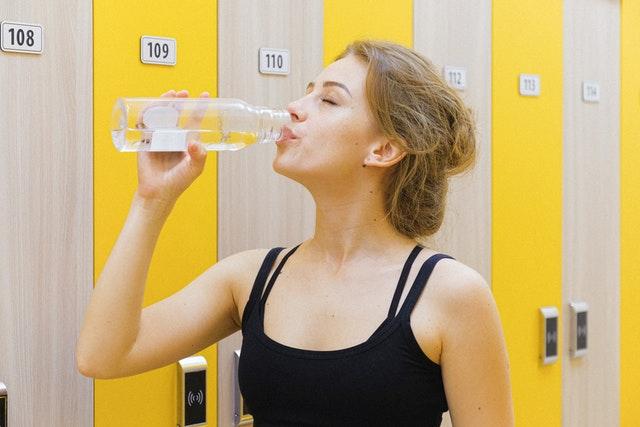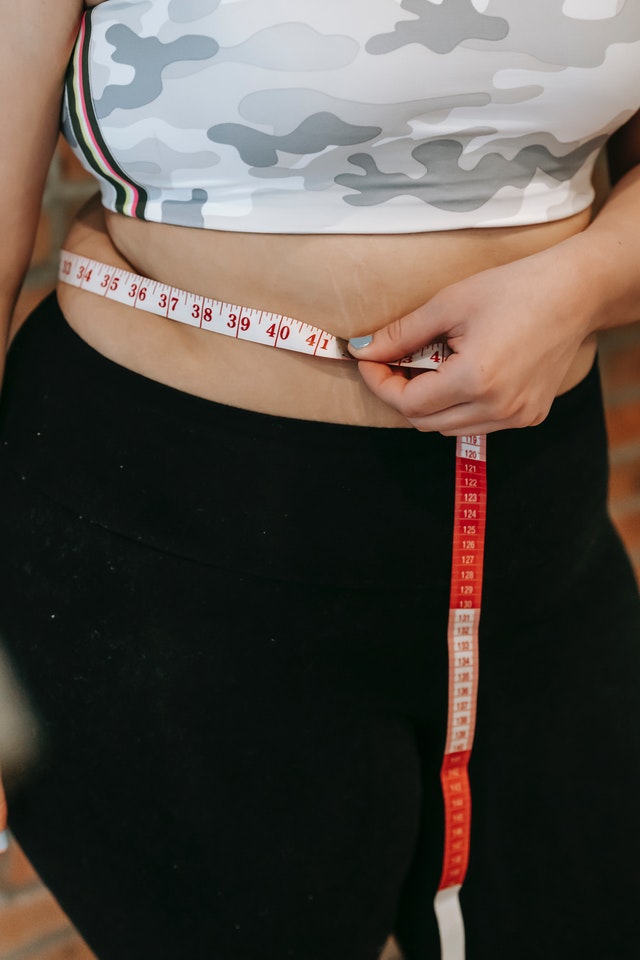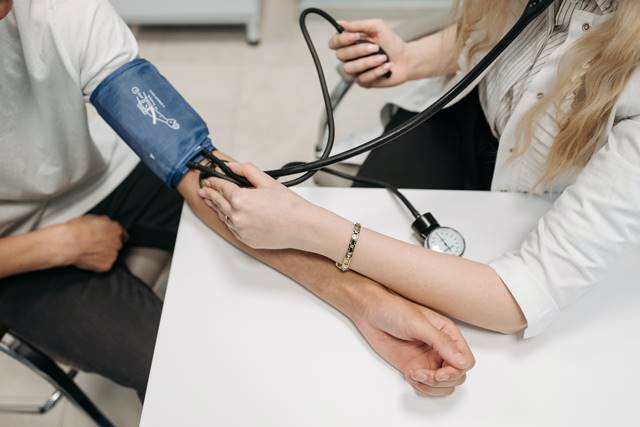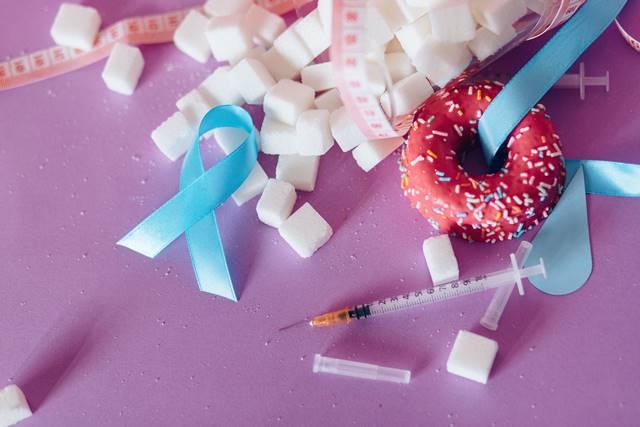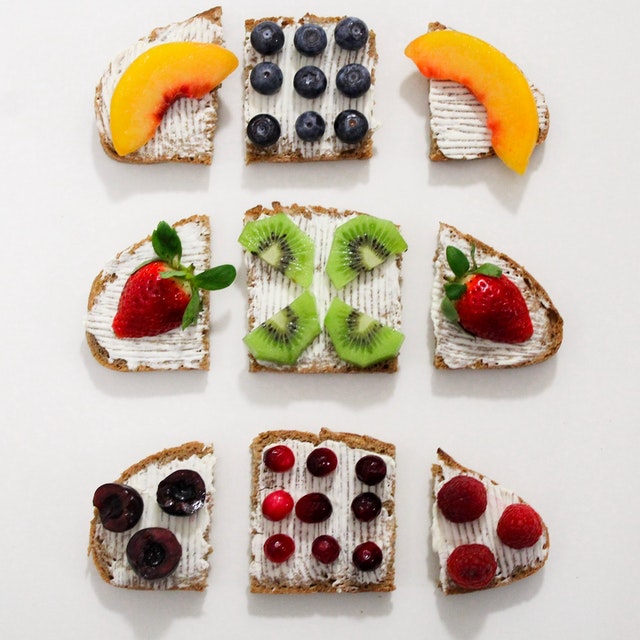Posts Tagged ‘diabetes’

What Are Common Diabetic Symptoms?
Diabetes affects up to 10% of the American population, according to the CDC. It is on the rise, with at least 1.5 million cases diagnosed yearly. Sadly, 1 in every 5 people is unaware they have the disease in the United States. Below shall be discussed the different diabetic symptoms.
The Negative Effects of High Blood Sugar Levels to the Body
The eyes
Diabetes increases your chances of experiencing dangerous vision problems that could lead to blindness. Some of these issues include:
- Glaucoma: Damages the nerve connecting your eye to the brain, leading to serious vision problems.
- Cataracts: The lens of your eye gets affected and becomes cloudy
- Retinopathy: The retina at the back of your eye changes.
The heart
Your heart’s nerves and blood vessels are at risk of damage after experiencing high blood sugar for a prolonged period. This increases the risk of heart diseases, including heart failure, stroke, and heart attacks.
The risk increases even more when you suffer from high cholesterol levels.
The kidneys
Diabetes affects the functioning of your kidney’s blood vessels. After a while, they may even stop working, leading to kidney failure.
The feet
With high blood sugar, blood flow to your feet is negatively affected. This leads to nerve damage which can cause sores, scrapes, and cuts not to heal in good time. With nerve damage, your feet may get injured without your knowledge leading to infections.
Sometimes, the infections get worse, and one may need an amputation.
The nerves
High blood sugar causes diabetic neuropathy (nerve damage). The side effects include pain, numbness, and tingling sensations, primarily in your feet.
The skin
Your skin becomes weak when you have diabetes. Scaly patches, yeast infections, and itching are some issues you may experience on your skin.
Erectile dysfunction
Since high blood sugar affects blood flow and nerves in the body, it can get complicated for a man to maintain an erection. Men with diabetes may experience a hard sex life.
Is it Possible for You to Tell if You Have Diabetes?
Well, yes and no, depending on the type you have. Warning signs for type 2 diabetes are quite subtle and can go undetected until one starts experiencing long-term effects. For type 1 diabetes, on the other hand, the signs appear in less than a month and are much more aggressive.
Early symptoms are a result of higher than normal glucose levels.
Diabetes Warning Signs / Diabetic Symptoms
Early signs of diabetes are quite similar for both type 1 and type 2, and they include:
1. Feeling thirsty constantly and peeing more often than usual – Diabetic Symptoms
Normally, humans pee up to 7 times a day. However, with diabetes, the frequency increases. Our bodies reabsorb glucose from the kidneys, but high blood sugar makes it hard for the necessary amount to be reabsorbed.
This leads to the production of more urine, which requires fluid from your body. As a result, you pee more often than usual, and because of passing that large amount of liquid, you get thirsty more often than average.
Interestingly the more liquids you intake, the more you pee.
2. Blurred vision – Diabetic Symptoms
The lenses of your eyes may swell up due to changes in body fluid levels when you have diabetes. This leads to poor vision because the shapes of your eyes change.
3. Hunger and fatigue – Diabetic Symptoms
For energy, the body converts the food you eat into glucose. However, you need insulin to absorb the converted glucose into your body cells. With diabetes, your body may become insulin resistant or produce it in fewer quantities.
This leads to fatigue and feeling hungry more than usual.
4. Itchy skin and dry mouth – Diabetic Symptoms
With diabetes, you lose so much fluid from your body through urination. The body needs this fluid to keep your skin and mouth hydrated. Without it, your skin becomes itchy while your mouth experiences dryness.
Type 1 Diabetes Symptoms
- Frequent nausea and vomiting
Our bodies burn fat and produce ketones. When you have type 1 diabetes, the ketone levels produced are higher than expected, and they can lead to a dangerous condition known as diabetic ketoacidosis.
High ketone levels make you feel sick in the stomach, causing you to vomit and feel nausea more often than normal.
- Unexpected weight loss
Since the body fails to absorb as much glucose as needed, it burns fats and muscles for energy. This will cause you to lose weight rapidly without even changing your diet. Taking foods high in trans fatty acids is advised to boost your health.
Type 2 Diabetes Symptoms
Type two diabetes symptoms take some time to show. These symptoms occur due to high glucose levels in your body for a prolonged period, and they include:
- Numbness or pain in your legs and feet
These may occur due to nerve damage caused by the disease.
- Persistent yeast infection in different parts of the body
Men and women with type 2 diabetes experience yeast infections in parts of the body where it is warm, and the skin folds under the breasts, between the toes and fingers, and around the sex organs.
This is because yeast feeds on glucose, and these areas have plenty of glucose.
- Sores and cuts begin to heal slowly
High blood sugar levels affect blood flow and also cause nerve damage. Because of these, your sores and cuts start to heal slower than before.
What are Gestational Diabetic Symptoms?
When pregnant, you may experience no signs of high blood sugar levels. However, you may notice that you urinate more frequently and get thirsty often.
How to Tell you are Experiencing Diabetes Complications
Warning signs of type 2 diabetes include:
- Impaired vision
- Erectile dysfunction
- Cuts and sores heal slower
- Itchiness, especially around the sex organs
- Recurring yeast infections
- Your skin may appear darker or velvety around the neck, groin, and armpits. This condition is known as acanthosis nigricans
- You may begin to gain weight
What is Hypoglycemia?
Also known as low blood sugar, hypoglycemia occurs when your glucose and sugar levels in the blood are too low to produce energy. Some signs include:
- Trembling
- Nervousness
- Confusion
- Impatience and crankiness
- Dizziness
- Frequent hunger
- Always feeling sleepy
- Recurring fatigue
- Feeling cold, clammy, or sweating more than usual
- Numbness or tingling sensations around your cheeks, tongue, and lips
With hypoglycemia, you may notice these few changes in your body:
- Problems with body coordination
- Repeated seizures
- Your skin gets pale
- A faster heartbeat rate
- Recurring headaches
- Blurred vision
- Unusual nightmares and crying in your sleep
What is Hyperglycemia?
The medical term for hyperglycemia (high blood sugar) is hyperosmolar hyperglycemic nonketotic syndrome (HHNS). This condition has many warning signs, including those we have listed for diabetes, and they are:
- Frequent urination
- Persistent hunger
- Feeling thirsty frequently
- Blurred vision
- Fatigue
- Sugar in the urine
- Blurred vision
- Tingling sensations or numbness in the feet
- Skin and vaginal infections
- Unexpected weight loss
- Slow-healing cuts and sores
- Blood glucose levels that are over 180 mg/dl
Hyperglycemia is a severe condition in either type of diabetes (more common in type 2) which can lead to diabetic coma and sometimes death. When your blood sugar levels skyrocket, you end up more dehydrated, and symptoms include:
- Persistent thirst
- Dry mouth
- Blood sugar levels above 600 mg/dl
- Confusion and insomnia
- Recurring fever of over 101 F
- Dry skin that stays warm with no sweat
- Hallucinations
- Eventual vision loss
- One side of your body becomes weak
What can You do Lower your Risk of Diabetes?
Adopting a good lifestyle and feeding habits is a sure way to reduce your risk of getting diabetes. Make these few things a part of your routine:
Maintain strict blood sugar control
To avoid diabetes, try your best to maintain your blood sugar levels within these ranges:
Before meals: 70-130 mg/dl
2 hours after meals: below 180 mg/dl
AIC or glycated hemoglobin level at 7%
Keep an eye on your blood pressure and cholesterol levels
Aside from diabetes, you may develop more severe health issues when your cholesterol and blood pressure rise above normal such as heart diseases. Try your best to maintain your cholesterol at or below 200 and your blood pressure below 140/190.
If it becomes a problem, your doctor can prescribe medication to help maintain these levels.
Go for checkups regularly
Your doctor can examine your blood and urine and perform other tests to detect any issues your body may be experiencing. These visits are vital because many diabetes complications have no obvious warning signs.
Avoid smoking
Inhalation of smoke raises your blood pressure and negatively affects your body’s blood flow. There are treatments available that can help you quit smoking.
Look for any cuts, bruises, ingrown toenails, redness, or swelling. Ensure you dry your feet after washing and apply some lotion to avoid cracked heels and dry skin. Protect your feet by wearing shoes outside and at the beach, and you can add socks during the cold weather.
Keep your eyes protected
Go for eye checkups at least once a year. This way, you will catch any issues early enough before they worsen.
Examine your feet every day
Before taking a bath, ensure the water is not too hot not to burn your feet, and always keep your toenails short and clean.
Keep your skin healthy
On areas where your skin rubs together, such as your armpits, apply talcum for protection. Avoid hot baths and showers or dry soaps and bath gels. Always keep your skin moisturized with hand and body lotion.
When to Seek Medical Attention
It is advised that you get tested for diabetes, especially if you have other conditions that might put you at risk or are above the age of 45. This will help you mitigate the side effects such as nerve damage.
Visit or call a doctor if you experience the following:
- Nausea and vomiting frequently
- Urinating a lot
- Consistent stomach aches
- You begin to breathe deeper and faster than normal
- Your breath smells sweet (like nail polish remover). This is due to high ketone levels in your body.)

Can Blood Sugar Affect Blood Pressure?
Yes! Most definitely.
To understand the entire process and the associated traits, we must first understand what blood sugars are in the human body and their functions.
Also referred to as blood glucose, these constitute the significant sugars found in the bloodstream. They are usually the major energy sources within the human cells, among other sugars and molecules like ketone bodies.
Blood sugar levels are usually of utmost significance to individuals, given that too low levels could prompt varied health conditions, including hypoglycemia. At the same time, too high levels could lead to hyperglycemia and associated symptoms.
The human body is thus equipped with sensory cells all over capable of detecting changes in blood glucose levels and effecting subsequent changes. For instance, if the blood glucose level goes above the optimal levels, the condition will be detected in the pancreas prompting the release of insulin hormone, which, in conjunction with other hormones, rectifies the surge.
Similarly, pancreatic cells will also detect low blood glucose levels, prompting the release of glucagon and even catecholamine hormones that collectively work to fix the condition by increasing blood glucose levels. The healthy average blood glucose level thus typically ranges between 70 and 120 mg/dL.
Extreme blood glucose levels are usually associated with the different types of diabetes. However, to advance to the diabetes stage must imply that the blood glucose level detection system, the alpha and beta cells of the pancreatic islets of Langerhans, and the associated hormones are functionally impaired.
Hence, individuals with diabetes don’t often lose the ability to regulate blood sugar levels but rather the cells and systems involved.
How Your Body Regulates Blood Pressure
Despite near similar processes exploited in maintaining blood glucose and blood pressure levels, regulating blood pressure is often more complicated and critical. For instance, the body usually regulates blood glucose levels by making more blood sugars or exploiting alternative energy sources.
However, there is no way of making more or breaking down blood instantly within the body to regulate blood pressure. In fact, the body cannot make more or less ‘blood pressure’ like it does blood glucose. As such, blood glucose regulation is often much simple and achievable, unlike blood pressure regulation for the human body.
Take, for example, an individual with low blood pressure from low blood volume cannot instantly rectify their condition as more blood would be needed, something the body can’t manage to manufacture fast enough as it is with blood glucose. These individuals can suffer massive health implications like incapacitation and long-term brain and body harm. This hints at the severity and dangers associated with blood pressure imbalances.
Therefore, due to the limited blood pressure regulation options, the body often utilizes the hormones used in blood sugar regulation, catecholamine/adrenalin, and other hormones to facilitate the process. As such, if you have low blood pressure, the body detects this and releases catecholamines. These subsequently tighten up the blood vessels through vasoconstriction, making them narrower and thus more challenging for the heart to pump blood through the arteries, ultimately raising the blood pressure levels.
On the other hand, high blood pressure usually warrants reducing the arterial pressure build-up by lowering the overall blood volume in the vessels. This is often achieved through several avenues.
First, some of the blood glucose regulating hormones like insulin stimulate nitric oxide production by the endothelial cells, which initiates the vasodilation/expansion of the blood vessels. This subsequently reduces the arterial pressure and the pressure against the heart.
Expanded vessels also release water through diuresis in the kidneys, further lowering blood volume and thus blood pressure. These are just some of the few standard blood pressure regulation processes.
Similar to diabetics, imbalance in blood pressure prompts conditions like hypertension and hypotension. These individuals often can regulate their blood pressure but have impaired sensors and body systems responsible for controlling blood pressure levels.
How Blood Sugar Affects Blood Pressure
The blood sugar and blood pressure regulation systems are all interconnected, given that they depend on similar body hormones to affect changes in the body. For instance, as indicated above, insulin, a hormone responsible for regulating blood glucose, is also associated with stimulating nitric oxide production in blood vessels.
It usually blocks the body’s ability to make nitric oxide which is significant for vasodilation of blood vessels and decrease in blood pressure. As such, if an individual with diabetes is utilizing insulin doses to facilitate blood glucose regulation, they should be aware of the underlying risks of high blood pressure, given that the body’s ability to lower blood pressure via nitric oxide production would be severely impaired.
Catecholamine hormones that regulate low blood pressure would also impact blood sugars by immensely raising the levels given the interconnected responses.
The same goes for low blood sugar individuals whose body systems utilize catecholamines to regulate the levels, subsequently prompting high blood pressure levels. This is a clear indication of how low blood sugar or low blood pressure could influence the rise/decline of the other.
It is also important to note that some blood pressure and blood glucose regulation medications may override the body’s natural protection systems and trigger these processes.
Can Diabetes Cause High Blood Pressure?
Diabetes and high blood pressure (hypertension) often go hand in hand as individuals suffering from one are often likely to suffer from the other. An individual with diabetes is thus often twice as likely to have high blood pressure as opposed to healthy folks.
The high blood sugar levels among diabetes patients can also often damage blood vessels and nerves of the heart, and these, when coupled with high blood pressure and associated symptoms, often result in increased strain on the heart muscles and blood vessels. This further increases the risk of heart/cardiovascular disease and even stroke.

As such, diabetes and hypertension often occur comorbidly, either at the same time or simultaneously. This is usually evident among populations as nearly one in every three American adults have hypertension.
Subsequently, two out of every three patients with diabetes usually have high blood pressure or take respective blood pressure regulating prescription medications. Further reports also indicate that diabetes often doubles one’s likelihood of dying from stroke or heart disease compared to those without diabetes.
Experts in the field also believe that both the conditions, diabetes and high blood pressure, often have common potential causes and risk factors. They have thus been linked to;
- Oxidative stress
- Insulin resistance
- Inflammation
- Obesity
Essentially, diabetes is associated with elevated blood sugar levels. High glucose levels often stress the vessels causing damage, narrowing, and accumulation of plaque such as cholesterol and fats within the vessel walls. These plaques further narrow the vessels making it difficult to pass adequate blood through. As such, the heart has to pump even harder to compensate for the narrowing leading to high blood pressure throughout the body.
Subsequently, the plaque formation and build-up due to the blood sugar levels further causes atherosclerosis, a condition which, when coupled with the high blood pressure, increases the risk of heart attack, stroke, and peripheral arterial disease for the associated individual.
Does Sugar Raise Blood Pressure Quickly?
People commonly associate salt with high blood pressure despite sugar also often playing a crucial role in blood pressure regulation. For instance, eating too much sugar may often inhibit nitric oxide production, eliminating vasodilation. This leaves an opportunity for vasoconstriction, which can result in high blood pressure. As such, sugar, just like salt, is also among the leading causes of high blood pressure.
Take fructose, for example, a simple sugar, which, upon ingestion, raises uric acid levels in the blood. High uric acid concentrations often inhibit nitric oxide production, which further eliminates flexibility and vasodilation capabilities of the blood vessels, prompting a rise in blood pressure.
Subsequently, excessive sugar consumption often leads to weight gain, and continued weight gain results in obesity. Since obesity is a major contributing factor to high blood pressure, increased sugar consumption thus raises blood pressure above optimal levels.
Sugars, more so added sugars, like table sugar and syrup, used in food preparation and processing have also been realized to contribute significantly to hypertension. This is because they are usually more harmful to human bodies, unlike the naturally occurring sugars in fruits and milk. Therefore, increased amounts above recommended range could result in high blood pressure.
Furthermore, hyperinsulinemia, a condition depicted by higher-than-normal levels of insulin in the blood, also contributes to high blood pressure if left untreated. Studies have actually shown that nearly half of high blood pressure patients often suffer from hyperinsulinemia or glucose intolerance.
The body often uses glucose for energy. However, with insulin resistance, associated individual systems often fail to respond to insulin as they should, prompting overproduction of the hormone to compensate for the high blood glucose and low energy levels. High insulin is usually associated with hypertension and together greatly increases the risk of heart disease and diabetes.
Bottom line
Diabetes and high blood pressure are among some of the diseases claiming many lives globally. As such, individuals should always endorse frequent health checkups to determine their status with regard to the conditions. Subsequently, those living with either or both conditions should also invest in a close monitoring program to prevent treatment challenges and prevent unnecessary health complications.

Controlling Diabetes with Diet
Controlling Diabetes with Diet – With a healthy diet and with regular exercise, diabetes can be controlled in a way that it won’t get any worse. Maintaining normal blood sugar levels can lessen the risk of having severe diabetes.
Controlling Diabetes with Diet, how? Here are a few general things you need to balance to have and maintain normal blood glucose levels:
- Taking prescribed medication for Diabetes
- Eating the right kind of food
- Doing regular exercise or any physical activity
Being able to manage these three basic things will definitely help achieve the optimal blood glucose levels.
What are Carbohydrates?
What is the role or what is the purpose of carbohydrates? Well, carbohydrates are the main source of energy for our body. About half of our daily calorie intake should have carbohydrates to have enough energy to get through the day.
What different food that are carbohydrates? These following carbohydrates break down into sugar in our blood:
- Bread
- Grains
- Starchy Veggies
- Fruits
- Dairy Products
- Sweets
Once the carbohydrates are broken down to sugar, the sugar gets stored and is as energy for the body. The presence of insulin is important in transporting the sugar to reach its designated storage area. Having too little insulin in the body will result in having high blood sugar levels. Controlling diabetes with diet is one of many ways to help reduce the risk of having severe diabetes.
Counting Carbohydrates? How does it work? Controlling Diabetes with Diet
Carb-counting (Carbohydrate counting) is the method of literally counting the amount of carbohydrates from the food or drinks you consume. Controlling diabetes with diet would include controlling how much carbohydrates you put in your body by distributing the amount evenly over your meals.
How do you know the amount of carbohydrates in your food or drink?
It is most probably listed on food labels at the back of the food packaging or it can be easily searched from the internet. It is better to read the labels including the serving size.
An example is 1 slice of toasted bread, with 1 teaspoon of peanutbutter, half of a regular sized banana, and 1 cup of regular milk is equivalent to three (3) carbohydrate servings or forty-five (45g) grams of carbs. (1 serving = 15 grams of carbohydrates)
Though google may provide a general idea of the amount of carbs in the food / drink you eat, having a registered dietitian by your side is definitely a bonus. A dietitian will help you with controlling diabetes with diet.
Are there Good and Bad carbohydrates?
The better carbs are those with a higher amount of fiber in them. Several research shows that getting right amounts of fiber regularly is beneficial for our health.
Fiber is a type of carbohydrate wherein fiber-rich foods will generally have more nutrients for the body. That explains why fiber is not in meat, fat and not even in dairy products. The following are examples of carbs with fiber are the following:
- Whole grain bread
- Whole grain cereals
- Whole grain pasta
- Brown Rice
- Barley
- Beans and Lentils
Fruits are also a great source of fiber. It is suggested that some fruits be eaten with their skin on. However, don’t forget to wash them. Fresh fruits and vegetables will always be better than canned ones. Less processed would mean more fiber.

What does Regular Exercise mean?
Controlling diabetes with diet would not only mean the regulation of food intake but also the amount of physical activity you do daily. With regular exercise (which would mean any physical activity such as dancing, home workouts, walking, gardening, etc), the following benefits will be achieved:
- Insulin Sensitivity Increases
- Promotes Healthy Bones
- Promotes healthy weight
- Improves Sleep
- Help lower blood glucose levels
It is always best to check with your doctor!

